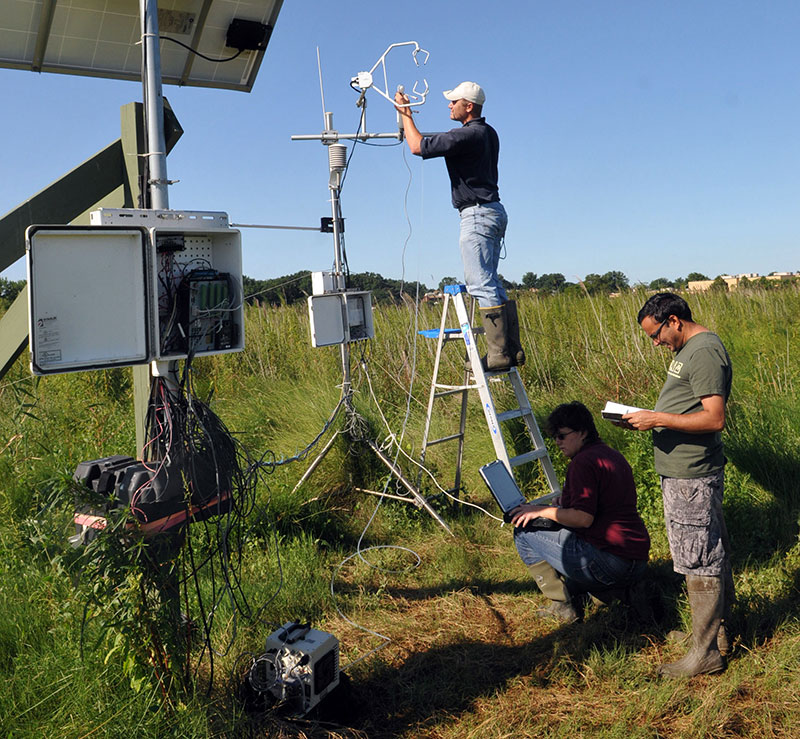As green leaves emerge and plants start photosynthesizing early in the growing season there is a shift from a winter condition where marsh ecosystems emit C02 to a growing season condition where marsh ecosystems capture more atmospheric C02 that they emit. In other words, ecosystems shift from being a source of C02 during the winter leaf-off months to being a sink of C02 during the leaf-on months. When marshlands become sinks of C02 they perform a valuable ecosystem service by removing greenhouse gas from the atmosphere and burying it in the sediments where it may remain buried for hundreds if not thousands of years if left undisturbed. There is an exact day each year when this shift from source to sink occurs and it`s usually at the end of April. MRRI scientists select this time period to calibrate the LI-7500A Open Path CO2/H2O Analyzer (CO2 sensor) that measures CO2 fluxes at the boundary between marsh vegetation and the atmosphere. The accuracy of the measurements from these sensors mounted on a 2.8 meters tower above the marsh surface depends on how well they are calibrated. To correctly measure this important ecosystem service, MRRI scientists conduct detailed calibrations at the start of the growing season, in the middle (July-August) and at the end (December-January).

